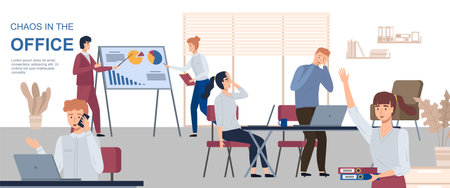Recognizing the Signs of Burnout in Corporate Environments
Understanding Burnout: More Than Just Stress
In the fast-paced world of corporate America, stress is a daily companion. But burnout goes beyond regular stress—its a state of chronic physical and emotional exhaustion that can seriously impact both your health and your job performance. Learning to spot the early signs can help you take action before things get worse.
Physical, Emotional, and Behavioral Signals
Burnout often shows up in three main ways: physical symptoms, emotional changes, and behavioral shifts. Each of these can look different depending on your work environment and personal coping style. Here’s how to recognize them:
| Type | Common Signs in High-Pressure Workplaces |
|---|---|
| Physical | – Constant fatigue, even after rest – Frequent headaches or stomach issues – Trouble sleeping or staying asleep – Increased susceptibility to colds and illnesses |
| Emotional | – Feeling cynical or detached from your work – Loss of motivation or enthusiasm – Increased irritability or impatience with coworkers – Sense of helplessness or being trapped |
| Behavioral | – Decreased productivity and performance – Withdrawing from team activities or social events – Procrastinating on tasks you used to enjoy – Relying more on caffeine, junk food, or alcohol to cope |
How Burnout Looks Unique in U.S. Corporate Culture
The American corporate environment often rewards long hours, constant availability, and a “can-do” attitude. While hard work is valued, it can make recognizing burnout tougher because feeling tired or stressed may seem normal. Some unique signals in U.S. workplaces include:
- Pride in overworking—wearing busyness as a badge of honor
- Reluctance to take paid time off, even when offered generously
- Fear of falling behind due to competitive workplace culture
- Avoiding conversations about mental health due to stigma
Why Early Detection Matters
Catching burnout early is key—it allows you to seek support or make small changes before the problem grows bigger. If you notice these signs in yourself or your coworkers, it’s important to acknowledge them instead of brushing them off as “just part of the job.” By being proactive, you can protect your well-being and maintain your best performance at work.
2. Building a Sustainable Work Culture
Why Culture Matters in Preventing Burnout
In high-pressure corporate environments, the workplace culture plays a huge role in how employees feel and perform. When companies focus only on results and “hustle,” burnout becomes almost inevitable. Instead, building a sustainable work culture that values employee well-being helps everyone thrive—not just survive.
Key Strategies for a Supportive Workplace
1. Encourage Open Communication
Create an environment where team members can share their thoughts, challenges, and ideas without fear of backlash. Regular check-ins and open-door policies make it easier for employees to speak up about workload or stress before issues escalate.
2. Prioritize Flexibility
Recognize that life happens outside of work. Flexible hours, remote work options, and understanding personal commitments go a long way toward reducing stress and preventing burnout.
| Flexible Option | How It Helps |
|---|---|
| Remote Work Days | Gives employees more control over their environment and schedule |
| Flexible Hours | Helps balance work with family or personal responsibilities |
| Personal Time Off (PTO) | Encourages rest without guilt or pressure to always be “on” |
3. Promote Transparency from Leadership
When leaders share company goals, changes, and challenges honestly, trust grows. Employees feel more secure when they know what’s happening and understand how their roles fit into the bigger picture.
4. Recognize Effort Over Constant Hustle
Avoid glorifying late nights and non-stop work. Instead, acknowledge smart effort, teamwork, and creative solutions. Celebrate wins as a group—big or small—to boost morale without promoting toxic competition.
Avoiding Toxic Hustle Culture: What to Watch For
| Toxic Sign | Sustainable Alternative |
|---|---|
| Praising overtime as “dedication” | Praising balanced productivity and healthy boundaries |
| No time off encouraged or approved during busy periods | Mandating regular breaks and vacation usage for all employees |
| Lack of mental health resources or discussion | Offering Employee Assistance Programs (EAPs) and mental health days; talking openly about stress management |
The Bottom Line: People First Wins Every Time
Cultivating a sustainable culture is about making sure your people feel heard, valued, and supported every day—not just during performance reviews or team-building events. When you prioritize well-being and ditch the hustle-for-hustle’s-sake mindset, you create an environment where employees want to stay—and can do their best work.

3. Leadership’s Role in Mitigating Burnout
How Leaders Set the Tone for Workplace Well-Being
In high-pressure corporate environments across America, the attitude and actions of leadership have a massive impact on employee stress and burnout levels. Managers and executives are not just responsible for meeting business goals—they also play a key role in creating a culture that supports well-being and prevents burnout.
Modeling Healthy Work-Life Boundaries
Leaders who practice what they preach inspire their teams to do the same. When managers consistently send late-night emails or praise long hours, employees feel pressured to follow suit. Instead, leaders should:
- Avoid after-hours communications unless truly urgent
- Encourage taking breaks and using vacation time
- Respect personal boundaries (no expectation for weekend responses)
| Leadership Behavior | Impact on Team |
|---|---|
| Sends emails only during business hours | Signals its okay to disconnect after work |
| Takes lunch breaks away from desk | Shows that rest is valued, not just productivity |
| Openly discusses time off plans | Normalizes using PTO without guilt |
Creating Open-Door Policies & Psychological Safety
An open-door policy means more than just keeping your office door physically open. It’s about being approachable, listening actively, and taking action when concerns are raised. Leaders can foster psychological safety by:
- Inviting honest feedback without fear of retaliation
- Regularly checking in with team members about workload and stress levels
- Following up promptly when issues are shared
- Providing resources for mental health support and encouraging their use
Steps to Build Trust and Openness:
- Schedule routine one-on-one meetings focused on well-being, not just performance.
- Acknowledge your own challenges with work-life balance to show vulnerability.
- Create anonymous ways for employees to share feedback or concerns.
- Publicly recognize employees who set healthy boundaries as positive examples.
Empowering Teams Through Flexibility and Autonomy
Giving employees more control over how they work is a proven way to reduce burnout. Leaders can offer flexibility by:
- Allowing remote or hybrid work options where possible
- Letting employees adjust schedules to fit personal needs (like school pick-ups or appointments)
- Avoiding micromanagement—trusting team members to get results in their own way
The Bottom Line for Leaders:
If you’re in a leadership position, remember: your example sets the standard. By prioritizing your own well-being, creating safe spaces for honest communication, and offering flexibility, you help build a resilient workplace where burnout is less likely to take hold.
4. Practical Tools and Resources for Employees
Preventing burnout in the high-pressure world of corporate America isn’t just about working less—it’s about working smarter, taking care of your mental health, and knowing when to ask for help. Here are some practical tools and resources that employees can use to stay balanced and productive.
Employee Assistance Programs (EAPs)
EAPs are confidential services provided by many U.S. employers to support employees with personal or work-related problems. These programs typically offer:
- Counseling sessions (in-person, phone, or video)
- Legal and financial advice
- Referrals for childcare or eldercare
- Crisis intervention
If you’re feeling overwhelmed, don’t hesitate to contact your EAP—it’s a free benefit designed for situations just like this.
Mental Health Benefits
Most U.S. companies include mental health coverage as part of their insurance plans. It’s important to know what’s available to you. Here’s a quick overview:
| Benefit Type | What It Covers | How to Access |
|---|---|---|
| Therapy/Counseling | Sessions with psychologists, therapists, or counselors (in-person or virtual) | Check your provider network on your company’s benefits portal |
| Mental Health Apps | Subscription to mindfulness or meditation apps (like Headspace or Calm) | Look for discounts or free access via your employer |
| Workshops/Webinars | Stress management, resilience training, mindfulness workshops | Sign up through HR communications or the company intranet |
Time Management Tips That Work in Corporate America
- Prioritize tasks using the Eisenhower Box: Focus on what’s urgent and important first.
- Use calendar blocking: Set aside specific times for deep work, meetings, and breaks.
- Avoid multitasking: Give full attention to one task at a time for better efficiency.
- Set boundaries: Communicate clearly about availability after hours—most teams appreciate directness.
- Take micro-breaks: Even 5 minutes away from your screen can refresh your focus.
Leveraging Paid Time Off (PTO)
PTO is a core benefit in most American companies—yet many employees don’t use all of it. Here’s how to make the most of your time off:
| PTO Strategy | Description | Why It Matters |
|---|---|---|
| Plan Ahead | Schedule vacations and mental health days well in advance. | This ensures coverage at work and gives you something to look forward to. |
| No-Guilt Days Off | Avoid checking emails or Slack while on PTO—set an out-of-office message. | You’ll return more recharged and productive. |
| PTO “Microbreaks” | If a long vacation isn’t possible, take a Friday or Monday off for a long weekend. | Short breaks still help prevent burnout and boost morale. |
Your Wellbeing Matters—Take Advantage of What’s Offered!
The right tools and resources can make all the difference in managing stress and staying energized at work. Don’t wait until you’re burned out—take small steps now using these proven strategies tailored for the U.S. corporate environment.
5. Promoting Resilience and Long-Term Engagement
Building Personal Resilience in a Fast-Paced Work Environment
Resilience is the ability to bounce back from setbacks, adapt to change, and keep moving forward despite challenges. In high-pressure corporate America, resilience helps employees manage stress and avoid burnout. Here are some practical ways to build personal resilience:
- Stay Connected: Build supportive relationships at work and outside the office. Talking things out with trusted colleagues or friends can offer new perspectives.
- Practice Self-Care: Make time for regular exercise, healthy meals, and enough sleep. Even short breaks throughout the day can make a big difference.
- Set Boundaries: Learn to say no when necessary and communicate your limits clearly with your team.
- Focus on What You Can Control: Prioritize tasks you have influence over instead of stressing about things beyond your reach.
Encouraging Ongoing Professional Development
Continued learning keeps employees engaged and motivated, especially in demanding roles. Companies can support professional growth by providing access to:
| Development Opportunity | Description | Example |
|---|---|---|
| Workshops & Seminars | Interactive sessions on new skills or industry trends | Attend a leadership seminar or diversity training |
| Mentorship Programs | Pairing less-experienced staff with seasoned professionals | Monthly check-ins with a mentor from another department |
| E-Learning Platforms | Online courses for upskilling at your own pace | Complete a certificate course on data analysis |
| Lateral Moves/Job Rotations | Temporary assignments in different teams or roles | A marketing employee tries a three-month project in sales |
Sustaining Motivation Amid Workplace Pressures
Maintaining motivation during tough times is key to preventing burnout. Here are some effective strategies:
- Acknowledge Achievements: Celebrate small wins as well as big ones. Recognition from peers or managers boosts morale.
- Create Purpose: Help employees connect their daily work to larger company goals or community impact.
- Support Autonomy: Give team members control over how they approach their tasks whenever possible.
- Open Communication: Encourage honest feedback between employees and management to address concerns before they become major problems.
Your Quick-Start Checklist for Resilience & Engagement
| Action Item | Description |
|---|---|
| Create a self-care routine | Add 10 minutes of mindfulness or light exercise daily. |
| Pursue a new skill monthly | Select an online class or workshop each month. |
| Spark meaningful conversations at work | Schedule regular one-on-one check-ins with teammates or supervisors. |
| Acknowledge progress regularly | Keep a list of accomplishments—big or small—to review weekly. |
By fostering resilience, encouraging ongoing development, and keeping motivation high, organizations can help their teams thrive even under pressure—and prevent burnout from taking root.


